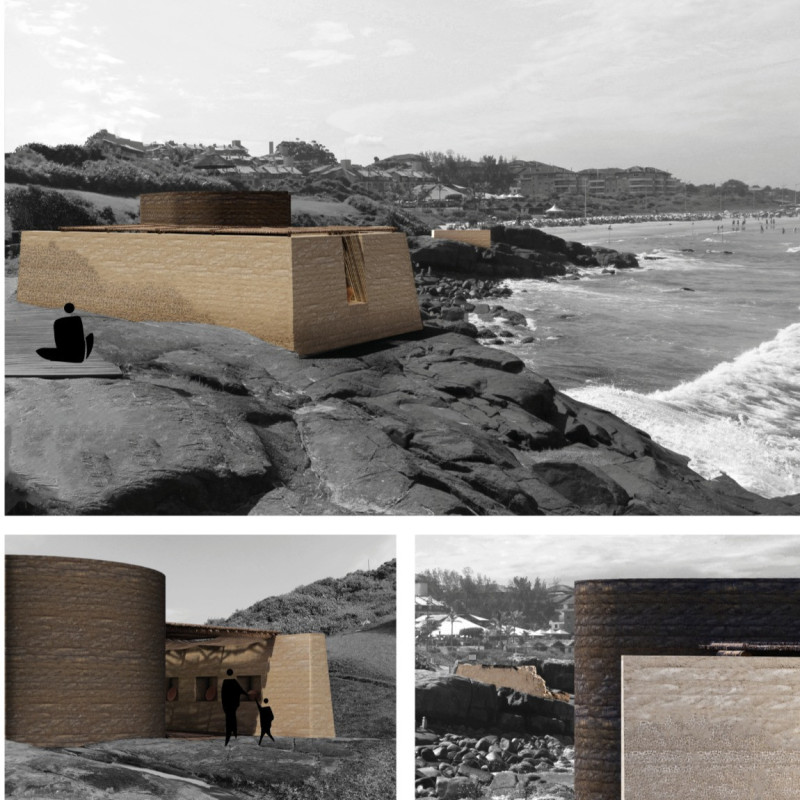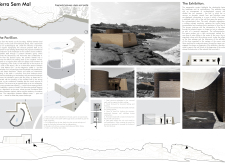5 key facts about this project
Terra Sem Mal is located on the coast of Florianópolis, Brazil, where land meets sea, creating a dialogue between nature and human design. This site is near an archaeological area, influencing the structure's design and giving depth to its purpose. The pavilion invites visitors to explore a journey that reshapes their understanding of space and time. The design acts as a transitional element that interacts with the surrounding landscape.
Architectural Concept
The pavilion serves as an exploration of the relationship between the site and its architecture. At first glance, it appears as a single plane among the rock formations of the coast. However, as visitors move through the pavilion, they experience the complexities of harmony and dissonance. The structure becomes a key part of the landscape, enhancing the overall connection to the coastal environment.
Materiality
The choice of materials reflects the local context. Walls are made from soil gathered directly from the site, keeping its natural form. This decision connects the pavilion to the land, allowing it to blend into the environment. The walls' textures are made more interesting by incorporating stones and shells, creating a tactile surface that encourages interaction. Soil is also dyed with the pigment from the Holocalyx balansae tree, linking the design to local cultural practices.
Structural Elements
The wooden roof utilizes a pau a pique interlocking method, featuring a fabric lining for insulation and aesthetics. The way light filters through the fabric creates a warm and inviting atmosphere inside. Steel cables support the roof, adding to the structure's strength while contributing to the visual experience. This balance of form and function is essential to the space.
Environmental Interaction
An important aspect of the design is its relationship with the environment. A wall is designed to be impacted by ocean waves, showcasing how the coastal landscape is ever-changing. This idea of change is central to the experience of the pavilion, connecting the structure directly to the coastal elements.
Inside, an exhibition space displays archaeological ceramic pieces that reflect the history of pre-Columbian cultures. This setup encourages visitors to engage with both the architectural space and the cultural stories it holds. The arrangement of items invites a connection between design, history, and nature.
A drop of water gradually falls in the center of the interior, creating a moment of reflection. This simple act highlights the passage of time and serves as a reminder of the relationship between the pavilion and the surrounding ocean.



















































